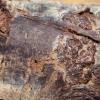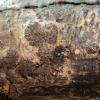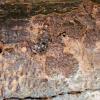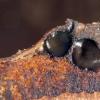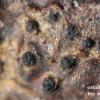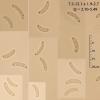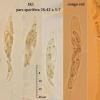
30-11-2025 12:53
 Edvin Johannesen
Edvin Johannesen
White short-stipitate apothecia found on thin twig

30-11-2025 10:47
 William Slosse
William Slosse
I recently found a collection of small Peziza sp.

27-11-2025 12:01
Thomas Læssøehttps://svampe.databasen.org/observations/10496727

27-11-2025 11:46
Thomas Læssøehttps://svampe.databasen.org/observations/10493918

17-09-2025 10:50
Heather MerryleesHi there!I am hoping for any advice on the identif

29-11-2025 08:40
 Andreas Millinger
Andreas Millinger
Hello,on a splintered part of a branch on the grou

28-11-2025 16:45
Nogueira HéctorNovember 23, 2025 Requejo de Sanabria (León) SPAI

25-11-2025 14:24
Thomas Læssøehttps://svampe.databasen.org/observations/10490522

27-11-2025 15:41
Thomas LæssøeSpores brownish, typically 4-celled; 26.8 x 2.4;

27-11-2025 11:31
Thomas LæssøeCollectors notes: Immersed ascomata, erumpent thro
Diatrypoid fungus on Alnus wood
Enrique Rubio,
20-08-2013 18:29
Have you some idea about this fungus on Alnus glutinosa wood at the sea level?
Their erumpent stromata are + or – discoid, pulvinate, 3-10 mm in diam. x 1 mm high. Perithecia 2 to many, in diatrypoid configuration, 0.37-0.57 x 0.42-0.62 mm, sphaerical to flask-shaped, with short conical to cylindrical necks 0.25 x 0.15 mm up to 0.15
mm over the stromatal level.
Asci long stipitate, I think IKI negative, 8-spored, pars sporifera 28-42 x 5-7 µm.
Diatrype? Eutypa?
Thanks again
Jacques Fournier,
21-08-2013 00:57

Re : Diatrypoid fungus on Alnus wood
Hola Enrique,
your fungus looks like small corticolous stromata of Eutypa lata, often not typical. If you have smooth, not cruciform ostioles it should be it. The apical apparatus of E. lata turns clearly blue in IKI but it is not apical but subapical, at the bottom of a short cylindrical inamyloid structure that I think I recognise on your pictures.
If it does not match you will have to consider another taxon but I don't see which one.
Cheers,
Jacques
your fungus looks like small corticolous stromata of Eutypa lata, often not typical. If you have smooth, not cruciform ostioles it should be it. The apical apparatus of E. lata turns clearly blue in IKI but it is not apical but subapical, at the bottom of a short cylindrical inamyloid structure that I think I recognise on your pictures.
If it does not match you will have to consider another taxon but I don't see which one.
Cheers,
Jacques
Enrique Rubio,
21-08-2013 21:09
Re : Diatrypoid fungus on Alnus wood
Many thanks again, Jacques
The ostioles are very indiferenciated and not cruciform. It's very difficult for me to apreciate the amiloidity of the subapical apparatus.
Cheers
Enrique
The ostioles are very indiferenciated and not cruciform. It's very difficult for me to apreciate the amiloidity of the subapical apparatus.
Cheers
Enrique
